
30 Years of the ADA
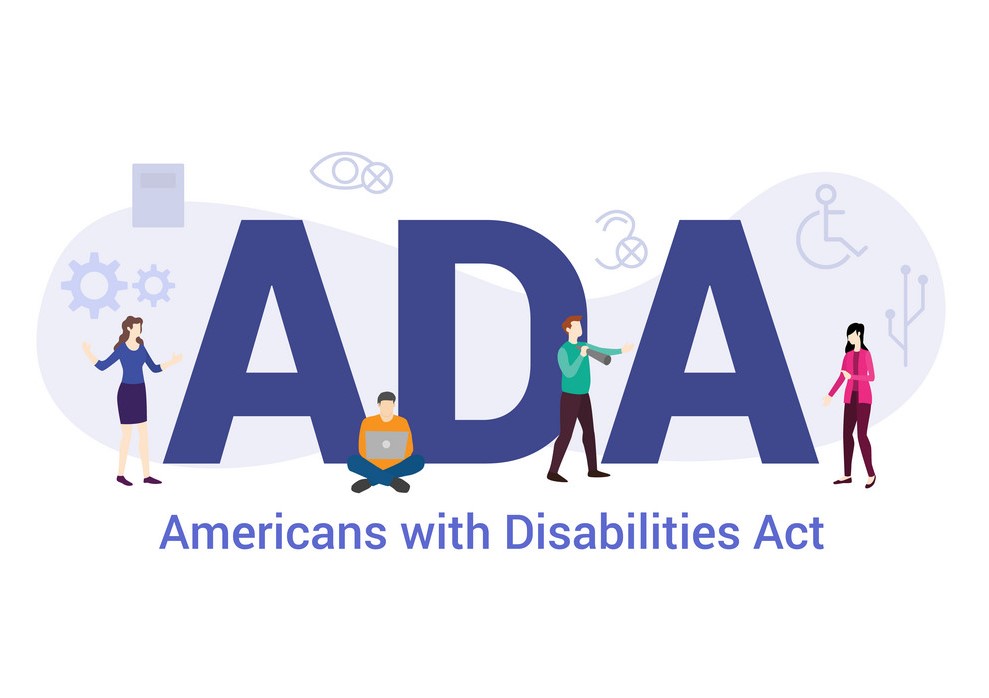
Anyone who has ever used a ramp at an airport to roll luggage, or at a mall to push a stroller, has benefited from the American with Disabilities Act (ADA). But as helpful and necessary as those ramps may seem for all, they wouldn’t exist had they not been installed specifically to accommodate those using wheelchairs.
This summer marks the 30th anniversary of the Americans With Disabilities Act, a landmark civil rights law, signed by President H.W. Bush in July of 1990. An extension of the 1964 Civil Rights Act, the ADA made definitive the rights of those who are born with or who experience a disability during their lifetime. The law prohibits discrimination in the workplace and in schools, and by both local and state governments. It also provides standards for privately owned businesses and commercial facilities, allowing those with disabilities the ability to lead full and productive lives.
The Americans with Disabilities Act ensures that individuals with disabilities have access to transportation, public accommodations, and communications. With multiple Titles in the law it establishes the requirement for both public and privately owned, leased or operated facilities – like hotels, restaurants, retail stores, doctors’ offices, day care centers, sports stadiums, movie theaters and more – to comply with the ADA measures. Minimum standards have been set that remove barriers in existing buildings where it is reasonable to achieve, and ensure that accessibility measures are planned and installed in all new construction. Besides supporting mobility, businesses also need to take steps necessary to communicate effectively with those with hearing, speech or vision disabilities.
Living with a disability can be profoundly challenging. Whether mental or physical, obstacles present themselves to those who suffer that just don’t exist for the general population. And being encumbered often causes limitations that can lead to lack of independence, depression and social isolation. For some, limitations also create financial hardship. Navigating life while overcoming a constant roadblock is a constant struggle. The ADA was signed into law in an attempt to level the playing field.
But passage of the ADA, like many other civil rights laws, was hard fought and took years to achieve. Prior to becoming a law, individuals with disabilities were routinely denied access to education and jobs. Schools cited a lack of facilities that would accommodate students with intellectual or physical disabilities. Businesses did the same, which left qualified individuals uneducated and unemployed. Today all public schools must provide an appropriate education for all students in their district and all government offices must provide the structural facilities necessary for equal access. Private schools and businesses are responsible to do the same.
But even with the Americans with Disabilities Act, barriers remain for some who live with a disability. Access to the internet has come to the forefront during the COVID crisis as many people are working from home and shopping from home, but what’s not clear is how far the ADA goes towards accommodating these needs. Expect to see court challenges on this front in the coming years.
Though work remains, 30 years of the ADA is still something to celebrate!
July is Herbal & Prescription Interaction Awareness Month

For many people prescription medications are a fundamental necessity to maintaining good health. While some may need it for physical health, others may need it for stabilizing their emotional health. But in either case prescription medications perform a number of important functions; balancing body or brain chemistry, interacting with cells or targeting specific receptors, medication can help manage overall well-being. For some, prescription medications can actually be life sustaining. But no matter the need, they can play an important role in keeping a person healthy. Taking them as prescribed by a doctor is essential.
Herbal medications or supplements have become very attractive to a lot of people, including those already on prescription medications, and have expanded in popularity because of their “all-natural” label leading people to believe that it’s better for them. But just because something is natural, doesn’t mean it’s safe, especially when interacting with prescription medications. Knowing which work together is imperative to maintaining your good health.
Herbal/Prescription Interaction Awareness Month is “to inform the public that herbal supplements can cause potentially dangerous drug interactions when taken with certain medications.,” according to the American Academy of Family Physicians. They report that 25% of U.S. adults say they are taking prescription and herbal medication (classified as dietary supplements), concurrently.
Most doctors will ask what medications you are on each time you go in for a visit. What they don’t always ask is what herbal supplements you may be taking and it’s critical that they are told in order to minimize the risk of serious drug interactions.
Whether you have been prescribed medication, are taking over the counter drugs or using herbal remedies, there are risks associated with all medications. And risks increase when taking multiple medications as drug interactions can sometimes prove fatal.
Examples of some of the more common supplements used and interactions:
- St. John's-Wort and Goldenseal can cause significant issues when taken with certain prescription medications.
- Fish Oils, can negatively interact with high blood pressure medications, birth control and blood thinners.
- Saw Palmetto, which is a common ingredient in supplements can be dangerous during pregnancy, cause issues with birth control, hormone therapy and also blood thinners.
- Echinacea, used to reduce cold and flu symptoms, can interact with certain chemotherapy agents, caffeine, liver medications, and medications that effect your immune system
- Ginkgo, taken to improve memory, has been shown to have negative interaction with aspirin, diuretics, anticonvulsants, antidepressants and blood thinners.
- Cranberry Extract can interact with blood thinners and should not ever be used while on blood thinners.
DOE Offers Guidance on Handling Disputes During Pandemic
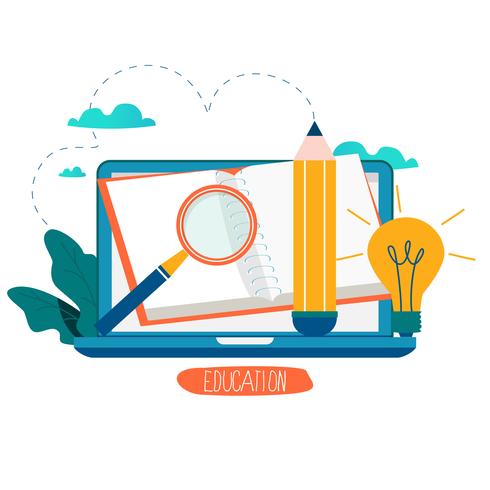
Ask any teacher, parent, or student right now and they’ll likely tell you that at-home education during COVID-19 has been a significant challenge. Remote learning is simply not a substitute for learning in the classroom; there are too many things that just can’t be accomplished on a Zoom call.
For children with disabilities and their parents, who rely on the support of an aide or on modified learning, it’s particularly trying. Even with the best intentions, some delivery of crucial IEP services fell far short of needs, forcing some parents to lodge complaints. The U.S. Department of Education (DOE) has now released guidelines on resolving disputes with school districts amid this crisis.
When schools were closed earlier this year, the DOE created protocols for at-home instruction and also announced that they would not waive the bulk of the Individuals with Disabilities Education Act, saying that learning must continue for all students during our national emergency. The DOE acknowledged that services for children with disabilities would not be the same during COVID-19, but that with collaboration, parents and educators could make things work.
While the DOE required that schools had to provide each student with a disability the special education and related services identified in the student’s IEP, they were told to do so “to the greatest extent possible,” recognizing that in some situations there could be exceptional circumstances that could affect how a particular service was provided.
In a nutshell, children with disabilities were entitled to at least the same options as the general education population during COVID-19, but within the context of the health and other challenges faced by a child and the school staff. Flexibility was necessary, but too many services and students were sacrificed.
For teachers of students with disabilities, trying to provide the same kind of hands-on learning, proved impossible. Many educational services, such as occupational therapy, physical therapy and speech therapy, just don’t translate well in an online instruction format, leaving children without the necessary tools for their development and education.
To respond to issues that have arisen between parents and school districts, the U.S. Department of Education’s Office of Special Education Programs (OSEP), released new guidance on how states and schools can address special education disputes during the COVID-19 pandemic.
A two-part Q&A on the Department of Education’s website answers questions on how to move forward when the recommended informal efforts between parent and educators prove futile. Mediation, state complaint, and due process complaint procedures are all available avenues for resolving issues. Extensions of timelines will be permitted in certain cases, and parties can agree to hold resolution meetings virtually in cases where the pandemic prevents face-to-face discussions.
Across the board, the level of education provided to students during COVID-19 has suffered. All children are losing ground, but children with IEP’s are at greater risk. Getting on the case now is critical for the fall and for getting ahead of potential future COVID-19 alternative learning plans.
To read the DOE’s full Q&A go to:
Part B: https://sites.ed.gov/idea/idea-files/part-b-dispute-resolution-in-covid-19-environment-q-a-document-june-22-2020/
Part C: https://sites.ed.gov/idea/idea-files/part-c-dispute-resolution-in-covid-19-environment-q-a-document-june-22-2020/
Pride Month 2020

It’s June and for members of the LGBTQ community, their families, friends, and allies, it’s a time of remembrance, commemoration, and celebration. It’s a time of year when we recognize the sweeping impact the LGBTQ community has had on history in the U.S. and around the globe. June is Pride Month!
Some of the most significant contributions to our society and our history were by members of the LGBTQ community. From Alexander the Great, Leonardo DaVinci and Michelangelo, to Sally Ride, Anderson Cooper and Ellen DeGeneres, LGBTQ people have given us art, culture, literature and science, and played an integral part in our civilization.
But it’s been a long road to liberation for the LGBTQ community. For centuries they were shamed, persecuted and criminalized. The first movement in this country hadn’t even begun until 1924 when Henry Gerber, a German immigrant, founded the first documented gay rights organization in the United States, the “Society for Human Rights.” In 1925, police raids caused the group to disband.
Over the next several decades, advances were slow. The ‘60’s arrived, a period of counterculture and the civil rights movement, but didn’t bring any real movement for the gay community until late in the decade. It was the uprising at the Stonewall Inn in NYC on June 28th, 1969, that became the tipping point for the movement. The gay bar in Greenwich Village was raided that night by police, only instead of capitulating, the patrons fought back beginning a riot that would last six days. Those riots turned the tide and real progress was on the horizon.
A year later the first pride assemblies took place. On June 28th, 1970, marking the first anniversary of the Stonewall uprising, demonstrations were held in New York, Chicago, Los Angeles, and San Francisco. Labeled “Christopher Street Liberation Day” in NY, a march began at the Stonewall Inn and covered 51 blocks, ending in Central Park. It was the very first pride parade.
This year marks the 50th anniversary of that first march, and today LGBTQ Pride draws millions of people out from all around the world each year to a month-long celebration. Typically, celebrations include pride parades, marches, parties, concerts, and educational workshops. Rainbow flags are flown in towns and cities across the globe. Also a time for reflection, memorials are held for members of the LGBTQ community who have tragically lost their lives to either hate crimes or HIV/AIDS.
The LGBTQ movement has made incredible progress, most of it in recent years. In 2015 a Supreme Court decision made same-sex marriage legal in all 50 states, and in 2017 the Court administered rulings that made adoption by same-sex couples legal in all 50 states. But for as far as they’ve come, LGBTQ people still face violence, inequality, and in some countries torture or execution because of whom they are or whom they love.
This month, take a moment to remember all the LGBTQ community has contributed. Reflect on what they have lost, what there is left to gain, and celebrate!
Summer 2020 – How To Make the Best of It

It’s been a really, really, really long spring, hasn’t it? And who among us can’t use a break right about now; especially from our homes? Not only have we been stuck inside, but also stuck working from home and educating our children at home. That’s a lot of time in one place and cabin fever is taking its toll.
But just in the nick of time, summer is here. Desperately needed warm weather, sunshine, and fresh air will be around for the next few months allowing us a happy escape from the confines of our four walls. And outside activity has the added bonus of being a safe place to enjoy. With kids out of school (and possibly no camp or organized activities), there will likely be a lot of outdoor activity ahead. For many people it also means a great time for vacation. But what will that look like this year?
While some Americans may be reluctant to vacation due to economic uncertainty, fears of virus transmission in crowds and closed spaces, (including planes, trains, and hotel rooms), others are desperate to break out and feel some semblance of normalcy. And though this summer’s vacation may not be what they had hoped for or planned, it will be a change from the monotony of these past few months.
So what can you do while adhering to the boundaries of COVID and still have fun? Though many doors are closed right now, it doesn’t mean you can’t enjoy a summer trip with your family. It’s just a moment for creativity, for considering alternatives, and maybe thinking slightly outside the box.
Regional travel by vehicle is projected to be this summer’s primary source of vacationing for most Americans. With gas prices down and social distancing up, families will likely stick to traveling to areas within driving distance from home. And what appears to be emerging as this summer’s most popular draw is camping.
RV sales and rentals are way up. The trend is expected to continue as people with the means look to social distancing options that allow them to travel, sleep, and eat in the same place. Tents are a less expensive way to have a similar experience. Camping lends itself to quieter and less crowded daily activities including, fishing, hiking, swimming, and S’mores.
Or you could rent a place. Whether you live near the beach or a lake, mountains or desert, rental homes are considered a generally safe option. Some parks and beaches may be more limited as states try to maintain social distancing, but if you work within the guidelines, you can enjoy the beauty of a new environment. Go for walks, bike rides, out on a kayak, or canoe.
And there’s always the option of a “staycation.” Plan day trips from home. You can likely do any of the above activities just outside your door or a quick car ride away.
It’s summer. Take this lemon year we’ve been handed and make some lemonade. (Just don’t have a stand).
Staying Safe From The Sun
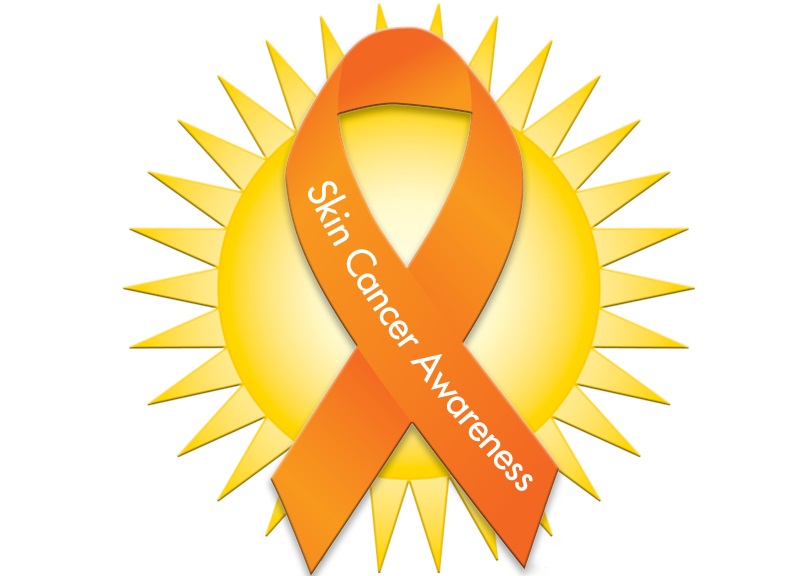
With Memorial Day behind us, and summer unofficially here, spending more time outdoors and in the sun is likely for most of us. And right now, because indoor socializing has become risky, the safest way to see family and friends will be outside. And let’s face it, fresh air, blue skies and social gatherings, even from a distance, will be the mental boost we could all use. More time in the sun isn’t. A surge in sun exposure isn’t.
While we all need some sunshine, it’s one of the best sources of vitamin D, early morning or late afternoons are the safest times to absorb it. The glow of sun-kissed skin may seem like a sign of good health, but sunspots and wrinkles are not the only unwelcome side effects of the sun. The most common cancer in the United States (fortunately also one of the most preventable) is skin cancer, and all it takes is 15 minutes of exposure for unprotected skin to be damaged by the sun’s ultraviolet rays.
There are three different types of skin cancer: basal cell carcinoma, squamous cell carcinoma, and the most dangerous and deadly, melanoma. One in five Americans will develop skin cancer by the age of 70 and more than 2 people die every hour of skin cancer in the U.S. Basal cell and squamous cell are the most common forms and make up 95% of all skin cancers; both directly due to a lifetime of sun exposure, but are highly curable when caught early and treated properly. Melanoma is a different story.
Malignant melanoma is a highly aggressive cancer and will typically spread to other parts of the body, becoming difficult to control if left untreated. When discovered in its earliest stages, melanoma has a 99% five-year survival rate; if it has metastasized to other organs, the prognosis becomes grim.
Skin type, having many or unusual moles, and family history are all factors in developing melanoma, but UV exposure causes the most cases. A history of blistering sunburns and ultraviolet light exposure from the sun or from tanning beds are directly attributable to melanoma. Staying indoors during the suns strongest hours is the most effective way to protect your skin. The use of high SPF sunscreens, shade, and covering your skin is essential for the hours you do spend outside.
Protecting your skin and regularly checking your skin are paramount to your overall health. The most common sign of skin cancer is a change on the skin, typically a new mole or spot, or a change to an existing mole. Self-examinations should include the ABCDE rule that tells you signs to watch out for: Asymmetry, Border, Color, Diameter, and Evolution. All changes should be followed up with your doctor, and seeing a dermatologist every year should be a part of your routine exams.
While it’s a great time for the great outdoors, do it wisely: avoid the sun.
For more information visit: aad.org
Protecting the Herd
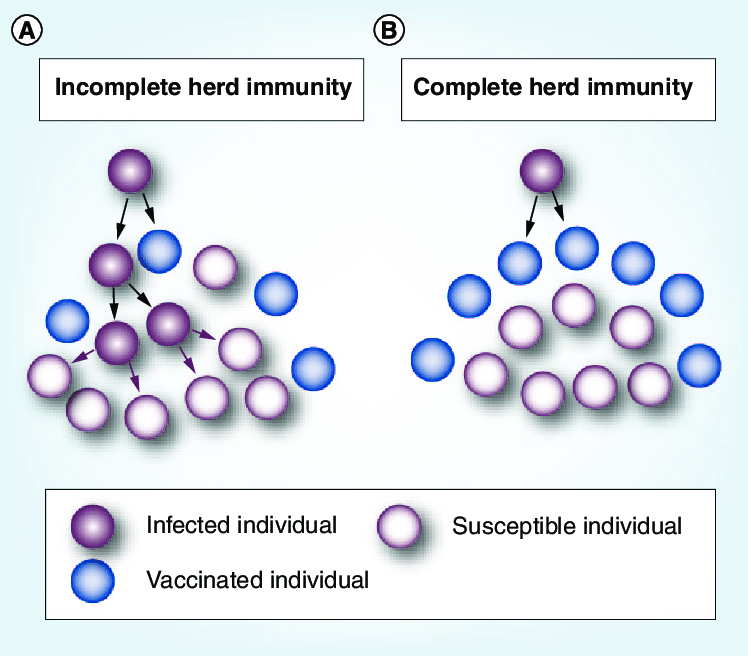
It’s called “herd immunity,” or “community immunity,” and has been making headlines and into everyday conversation among everyday people. As a society we had become so reliant upon it that unless you were among the vulnerable you didn’t think much about it. For most people it meant no more worrying about measles or polio. For those with underlying conditions it was a shield from a potential life-or-death situation.
Germs from viruses can make their way quickly through a community. Some are fairly benign as in the case of the common cold. But others can pose a threat to otherwise healthy people, and are a serious cause for concern for those with underlying conditions. Illnesses such as cancer, diabetes, hypertension, autoimmune diseases, or COPD make it harder for a body’s immune system to fight off infection. Treatment for those illnesses can leave a person immune-compromised, leaving them doubly vulnerable.
A term created by veterinarians, “herd immunity” is defined as “the indirect protection for a contagious infectious disease that happens when a population is immune either through vaccination or immunity developed through previous infection.” Meaning that even if a person can’t be vaccinated, they are protected because those around them are immune, therefore not passing along disease. Eventually, once herd immunity is established, diseases can become rare or eradicated, as in the case of smallpox.
Prior to the middle of the 20th century, thousands of people died from measles, mumps, polio, whooping cough and rubella. Natural herd immunity, achieved through infection, was challenging to induce without a lot of serious illness and death. Once vaccines were developed we saw those diseases nearly eliminated. Widespread adoption of vaccines protected individuals and the community at large. In recent years people choosing not to vaccinate, “anti-vaxers,” have garnered attention as measles and whooping cough and other diseases have crept their way back into our population, leaving the vulnerable exposed to old threats.
But COVID-19 has brought the discussion of vaccines and herd immunity to the forefront, ringing the bell and giving us a harsh reminder of why they are so vital. This novel virus has halted work, altered lifestyles and damaged economies worldwide. Here in the U.S. it’s responsible for the loss of tens of thousands of lives in a matter of weeks, and confounded the scientists we assumed could protect us from disease. Some believe that relying the development of natural herd immunity is the way forward, but scientists warn that millions more people will be lost if that’s the path.
Developing herd immunity is challenging. Scientists at the NIH believe that this particular virus will need 70% or higher population immunity to develop herd immunity and that it won’t be reached until 2021 at the earliest. We can all live in hope that herd immunity will magically develop, but without widespread adoption to vaccines we may not achieve it without suffering devastating loss of life. A vaccine is critical to achieving it and to saving lives.
The Struggle is Real. So is the Stigma.

“Suck it up.” “Get a grip.” “Snap out of it.” Anyone who suffers from a mental illness has likely heard these words at some point in their struggle. But what’s offered as well-meaning advice often contributes to the self-doubt and feelings of shame that can come as a result of living with these conditions. If it were as easy as putting on a happy face, mental illness wouldn’t be the leading cause of disability in the United States. And though the discussion has become more open and the understanding of these conditions has grown, the reality is that literacy is still low and stigma and social exclusion remain. Tell someone you have cancer and they’ll bring you lasagna. Tell them you’re struggling with mental illness…don’t wait for dinner. May is Mental Health Awareness Month and a great time to get educated.
Historically mental illness was a source of shame. Families didn’t want to acknowledge it, much less address it. A loved one struggling was often hidden from the world and labeled by outsiders. Ignorance and misinformation continue to fuel the stigma attached to many of these disorders, leaving people who suffer reluctant to get help, often resulting in delay in treatment.
The National Alliance on Mental Illness defines mental illness as “a condition that affects a person’s thinking, feeling, behavior or mood.” Day-to-day living is often profoundly impacted by these conditions, as well as relationships. One in five adults in the U.S. experience mental illness each year. One in twenty-five adults experience serious mental illness each year, and one in six children between the ages of 6-17 will also experience a disorder each year.
Some of the more common mental health disorders are: anxiety, depression, bipolar disorder, obsessive compulsive disorder, and eating disorders. Mental illness is no one’s fault and isn’t the result of one event. Genetics, environment, and lifestyle all contribute to whether someone develops a mental health condition. Stress, traumatic events, and brain chemistry can all play roles. Common signs include: excessive worry or fear, feeling low, problems concentrating, extreme mood changes, difficulty with relationships, substance abuse, suicidal thoughts, and intense fear of weight gain. Some people have mild illness while others might suffer from an eating disorder that can lead lasting damage to bones, organs, or even death. Other conditions can lead to homelessness or suicide.
Living with a mental illness is hard and presents a range of challenges, such as side effects from medications. Add to that the feelings of frustration and inferiority that often go along with it. Many countries offer programs to help young people gain basic knowledge and skills for protecting their mental health and understanding mental health issues. Research shows early detection and intervention improves prognosis for severe mental illness. Promoting mental health awareness is important to building positive responses and seeking help. Opening your mind and your heart may help someone you know or love get the help they need.
Celebrating Nurses

Approaching each day with dedication, commitment, and compassion are some of the hardest working and trusted among us. Never before have we collectively been reminded of their selflessness and devotion. If there’s ever been a time to recognize and celebrate nurses, this is the year. As it happens, 2020 is the 200th birthday of Florence Nightingale and was already declared the global “Year of the Nurse and Midwife.” This May, a month that typically includes a week for recognizing nurses, the celebration goes on all month.
They’re with us from birth to death; the first person to care for you when you enter a hospital and the last to see you before you leave. Nurses not only administer most of your medical treatment during a stay, they nurture you, encourage you, provide a warm smile, a hand to hold, and often a shoulder to cry on. If doctors treat the patient, nurses treat the person.
Since the COVID-19 pandemic began, we’ve seen their images across television screens and newspapers. The faces, or really just the eyes, of tired, tested, but devoted people who are fighting a nontraditional war against a new and mysterious enemy. Some have come out of retirement to help and others have traveled to hot spots to bring relief to their peers. In a profession that could be described as more of a calling than a career, these front-line workers are sacrificing themselves to help and heal us all.
But not all nurses work in hospitals. They serve in a variety of healthcare settings, playing significant roles in private practices, schools, nursing homes, as well as at-home care. They run immunology clinics, blood drives, public health seminars, and general health screenings. Nurses not only take care of the sick or injured, they are also responsible for promoting the overall good health of individuals, families and communities. Many are academics, involved in healthcare research, management, policy deliberations, and patient advocacy. Their hours are often erratic and typically long.
Nursing dates back to the earliest times, but Florence Nightingale professionalized it with her pioneering work beginning in 1851. Florence was a well-educated girl from a wealthy British family who made what was considered a radical decision in choosing to care for the sick and the poor in hospitals or their homes. Other young women in her class traditionally only cared for family or intimate friends, but Nightingale believed that a woman with her scientific knowledge and education could help dramatically improve the health of patients. At the same time she blazed a path to personal freedom and an independent career option for all women.
Making up the largest health care occupation in the United States, there are more than 2.9 million nurses here and millions more worldwide. Today the demand for nurses remains high, and with advancements in healthcare technologies and healthcare systems, and the potential for further health crises, we can expect the need for nurses to increase.
Chances are pretty good a nurse has touched your life in some way. Take this month to thank one.
May is Vasculitis Awareness Month!
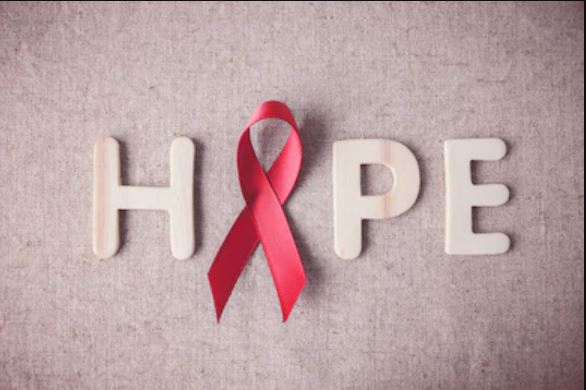
Vasculitis? What is it and why should you care? Indeed vasculitis is a rare disorder, one you may have never heard of and one that you likely will never personally develop. But the disorder includes nearly twenty different rare autoimmune diseases and at some point, you or someone you know or love may be faced with it. Awareness may help you recognize its symptoms, address them and perhaps save a life.
Vasculitis is a general term for inflammation of the blood vessels. Inflammation that causes narrowing, weakening and scarring, and can restrict blood flow and possibly cause damage to vital organs and tissue. The diseases in the vasculitis family are counted among many other autoimmune illnesses where an overactive immune system mistakenly attacks it’s own healthy cells. Some of them, without treatment, are life threatening.
Up until the seventies, several forms of vasculitis were almost always fatal. That was until a young doctor began working on it with his mentor; examining it in their work at the National Institutes of Health, Dr. Anthony Fauci, (yes, that Dr. Fauci), and Sheldon Wolff were asked to also consult on cancer treatment for patients at the National Cancer Institute. The powerful forms of chemotherapy that were being used had the side effect of suppressing the immune system. Fauci realized that perhaps, vasculitis patients would also benefit from the same drugs at a lower dose. By utilizing the same chemotherapy, they were able to put patients in remission with these life saving measures.
The more severe forms of vasculitis usually require lifelong medical care, but today, patients can live long and relatively normal lives. Some forms are mild and may improve on their own. The diseases are categorized by the size and location of the vessels that they affect. Many share similar symptoms and treatments, but each is distinct and needs to be treated specifically. Among these diseases are: Goodpasture’s Syndrome, Behcet’s Disease, Kawasaki Disease, Polyarteritis Nodosa, Granulomatosis with Polyangiitis, Rheumatoid Vasculitis, and Takayasu’s Arteritis.
The different symptoms of the different forms of vasculitis can be mistaken for other illnesses, some appearing very benign, but could signal serious illness: chronic congestion and/or sinus and ear issues, headaches, rashes, eye pain and redness. Other symptoms such as fever, muscle or joint pain, excessive fatigue or weakness, lack of appetite or weight loss, abdominal pain, shortness of breath, a lingering cough or coughing up blood, abdominal pain, neuropathy, and bloody or dark colored urine can be alarming. Some experience mild symptoms of the same illness that may strike another person aggressively.
Vasculitis can affect anyone at any age, and usually affects women and men equally. While some forms may be more common among certain age or ethnic groups, none are exclusive to any one group.
Diagnosing these diseases can be challenging, and so finding the right doctor is paramount to finding the right treatment. After a full exam, and depending on symptoms, doctors may order a variety of lab work or imaging, biopsies or lung function tests in order to accurately diagnose and confirm their diagnosis before beginning treatment. Once diagnosed, a team approach with several specialists is typically recommended depending on the organs involved.
Vasculitis is rare, but there’s a good likelihood you’ll know someone living with it. Awareness leads to knowledge and that’s always a good thing.
For more information visit: VascultisFoundation.org
Hope Trust serves clients throughout the United States.

